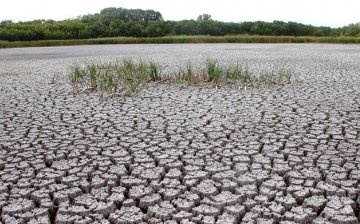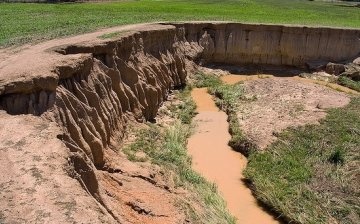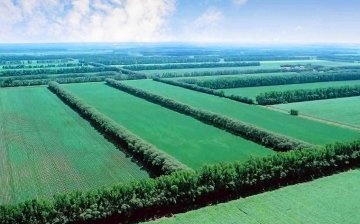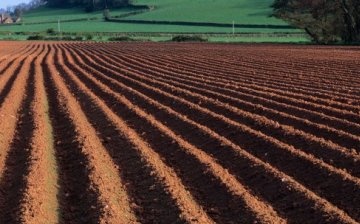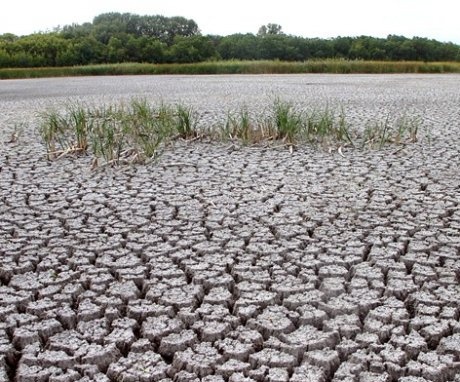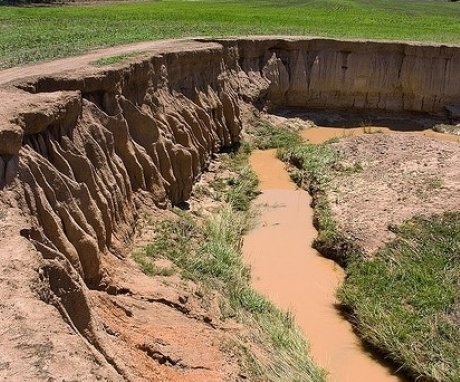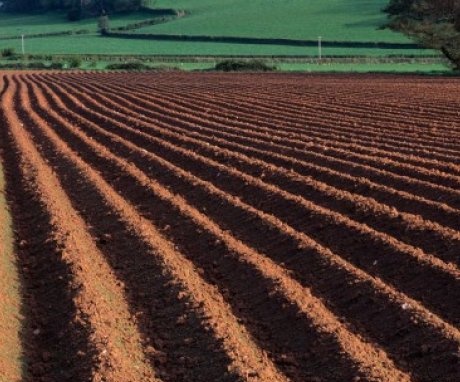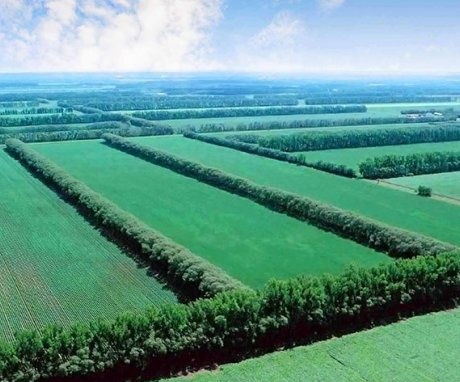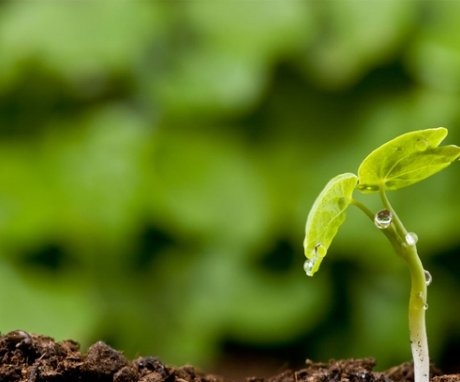Methods for protecting soil from water and wind erosion
One of the important factors that have a negative impact on soil productivity is erosion - this is the destruction of the upper fertile soil layer under the influence of natural and anthropogenic forces. The more intensively the land is used, the more efforts have to be made to maintain its fertility. Irrational land use leads to a rapid depletion of the soil, which ultimately makes it completely unsuitable for agriculture.
Content:
- Types of soil erosion
- Causes of soil erosion
- Methodology for protecting soil from water erosion
- Methodology for protecting soil from wind erosion
- Additional methods of erosion control
Types of soil erosion
The surface layer of the soil is destroyed by water or wind, respectively, it is customary to distinguish between water and wind erosion of the soil. Let's take a closer look at each of these processes.
Water erosion occurs mainly on slopes, from which the upper fertile soil layer is washed away by melt water or water from irrigation canals. As a result, gullies, ravines begin to form, and very soon the area begins to lose its fertile qualities. It is customary to classify water erosion for several more reasons:
- According to the distribution of the water flow, surface and linear are distinguished. In the first case, the water flow washes away only the upper humus layer, in the second, a strong water flow leads not only to the washing out of the upper soil layer, but also to the destruction of the underlying rocks, in this case it is much more difficult to restore the soil.
- The degree distinguishes between natural and anthropogenic erosion. The first occurs under the influence of only natural forces, and, as a rule, it does not have a significant effect on soil fertility. The second arises due to irrational farming, and it is able to take out the site from circulation in a short time due to the destruction of the fertile layer.
Wind erosion occurs mainly in steppe regions with large open spaces; it is the weathering of fertile soil particles in areas not protected by vegetation. Wind erosion is capable of capturing large areas, it is especially dangerous for dried up land masses, most often the territories suffer precisely because of too active human economic activity.
Soil erosion protection is one of the priority areas agrotechnics.
It has two goals - to prevent erosion and weathering of the fertile soil layer and to increase yield, these goals are inseparable. Today, a wide range of measures has already been developed and successfully applied to protect agricultural land from depletion.
Causes of soil erosion
Natural soil erosion is largely associated with the climatic characteristics of this region, while human activities in growing agricultural crops can significantly accelerate natural processes.
The following factors affect the rate of damage to the surface layer:
- Features of the climate.The development of water erosion is typical for regions with prolonged heavy rains, as well as with the rapid arrival of spring, accompanied by a sharp melting of a large amount of snow. The resulting melt water erodes the soil and leads to damage to the valuable fertile layer. Wind erosion is characteristic of lowland areas with a dry climate; due to a small amount of precipitation, the soil dries quickly.
- Features of the relief. The erosion rate directly depends on the steepness and length of the slopes, in addition, destructive processes develop on convex slopes faster than on concave surfaces. On the plains, erosion develops faster where vegetation cover is minimal.
- Soil properties also play an important role in the rate of erosive processes. Chernozems are considered the most stable, such soil practically does not erode and does not erode. Gray soil, clayey and sandy soil, on the contrary, is characterized by the least resistance and quickly collapses under certain conditions.
- The presence of a vegetation layer. Plant roots provide the soil with reliable protection from water and wind, in addition, they provide quick moisture absorption and prevent the soil from drying out even in hot weather. Tall plant stems also prevent the soil from eroding, as the wind speed near the ground is reduced.
- Human economic activity remains one of the most destructive factors. Uncontrolled cattle grazing in the same territories, plowing land in violation of the rules crop rotation, development of deposits - all this leads to damage to the soil layer, and it is extremely difficult to restore it.
Thus, when selecting methods to combat those other types of erosion, one must take into account the reasons for its occurrence. Only by eliminating the causes is it possible to achieve a sustainable result and ensure soil protection.
Methodology for protecting soil from water erosion
Soil protection from water erosion is a whole complex of agro-reclamation and irrigation and reclamation measures, which should be carried out according to a previously agreed plan.
The complex of works on soil protection includes the following main directions:
- Organizational and economic work. They include a periodic survey of fields with the preparation of plans and maps, a comprehensive assessment of erosion processes, the development of an action plan and control over their implementation. Advance planning is one of the most important success factors in erosion control.
- Agro-reclamation measures are a system of crop rotation taking into account soil protection. She suggests landing of perennial crops, placement of cultivated plants in strips on slopes, development and installation of a snow retention system to prevent soil leaching by melt water. In addition, among the measures, the introduction of mineral and organic fertilizers... The main task at this stage is to minimize soil leaching by melt water and prevent soil depletion.
- Forest and irrigation and drainage protection of soil. It involves the planting of forest belts on the slopes, the arrangement of canals for drainage of melt water, terracing of slopes, the creation of dams and artificial reservoirs. These measures make it possible to direct water disposal along strictly limited routes and protect the main land mass.
Work to protect the soil from water erosion also depends on the level of the slope. In areas with a slight slope, not exceeding 2 degrees, surface runoff is quite easy to minimize, for this it is enough to sow in transverse stripes or plant plants along the contour.
On fields located at a slope of up to 6 degrees, a wide range of soil protection methods is used: including step plowing, furrowing, hole plowing and other techniques.
On a steeper slope, protective stripes of perennial grasses are created on the field.For 40 meters of planting of cultivated plants, the width of the protective herbaceous strip should be at least 7 m. The width of the protective buffer strip depends on the steepness of the slope: the higher it is, the wider the stripes should be. Planting row crops is not allowed on steep slopes.
A set of measures to combat water erosion allows you to get a good result and ensure the preservation of the soil for many years. Periodically, the soil condition should be monitored with the correction of the applied protective measures.
Methodology for protecting soil from wind erosion
Soil protection from wind erosion is a set of measures designed to prevent soil weathering and ensure the preservation of the upper fertile layer. For this, a soil-protective crop rotation is used, involving the placement of cereal crops and perennial grasses in strips. In addition, protection against erosion requires measures to accumulate moisture and create protective forest buffer strips.
The main way to protect the land from wind erosion is to create a dense vegetation cover that prevents the gradual weathering of soil particles.
Where wind erosion poses a serious threat to the preservation of yield, half of the crop rotation is located across the prevailing direction of the winds, in addition, it is undesirable to place roads and forest belts along the slopes.
There are several common methods of dealing with wind erosion:
- Disembarkation of wings from tall-stemmed crops. Such plants become an effective protective barrier against the wind and significantly reduce its speed and negative impact on the soil. The sowing of perennial grasses and winter crops is expanding, and fodder lands are being improved.
- Moisture accumulation measures. For this, wings are planted from tall plants such as mustard or corn... Planting is carried out in mid-July: in this case, the plants grow quickly, but no longer produce seeds. The landing of the wings allows to ensure even distribution of snow in the winter and prevent the negative impact of strong winds on the ground.
- Snow retention by means of striped snow compaction. It allows to reduce soil freezing and provide intensive moisture in the spring. This has a positive effect on productivity and protects plant roots from freezing.
Such simple agrotechnical techniques allow you to get a good result and maintain the fertility of the soil. In addition, to protect against wind erosion, the planting of wind-shelter forest belts is used, they are located at the borders of the fields allocated for crop rotation.
Additional methods of erosion control
Most of the methods for combating water and wind soil erosion are preventive in nature: these measures are aimed not at restoring the soil, but at preventing its destruction. Timely implementation of preventive measures allows avoiding the occurrence of foci of erosion and its further spread over agricultural coals.
In addition to the above, agriculture also uses several more effective ways to combat soil erosion:
- One of the most effective methods to combat water and wind erosion is the construction of erosion control terraces. The areas are sown with perennial grasses, the rows are placed across the slopes. For this, legumes are actively used.
- Sodding (also called sideration). This is a method of plowing the green mass of plants into the ground, green manure is plowed during the period flowering... Thus, the soil is enriched with useful organic matter, in addition, its resistance to erosion and weathering increases.
- Lane landing shrubs across the slope. Protective belts prevent both water and wind erosion, they become a reliable barrier to soil destruction.Forest belts are also planted at the upper borders of slopes to protect them from crumbling and erosion, as well as at the bottom of ravines and at the edges of fields.
- Arrangement of dams, creation of artificial reservoirs helps to increase soil moisture and protects it from drying out. To maintain soil moisture, harrowing is also carried out in early spring, while a protective mulch layer is introduced into the soil, which also enriches it with organic substances.
- Correction of the melt water runoff process. For this, methods such as roaming, intermittent furrowing, etc. are used.
All these methods can significantly slow down erosive processes and preserve soil fertility. Timely introduction of complex fertilizers promotes accelerated plant growth, root system which creates an additional powerful barrier to soil destruction. Taking care of the condition of the earth will help maintain a high yield for years to come.
More information can be found in the video.




